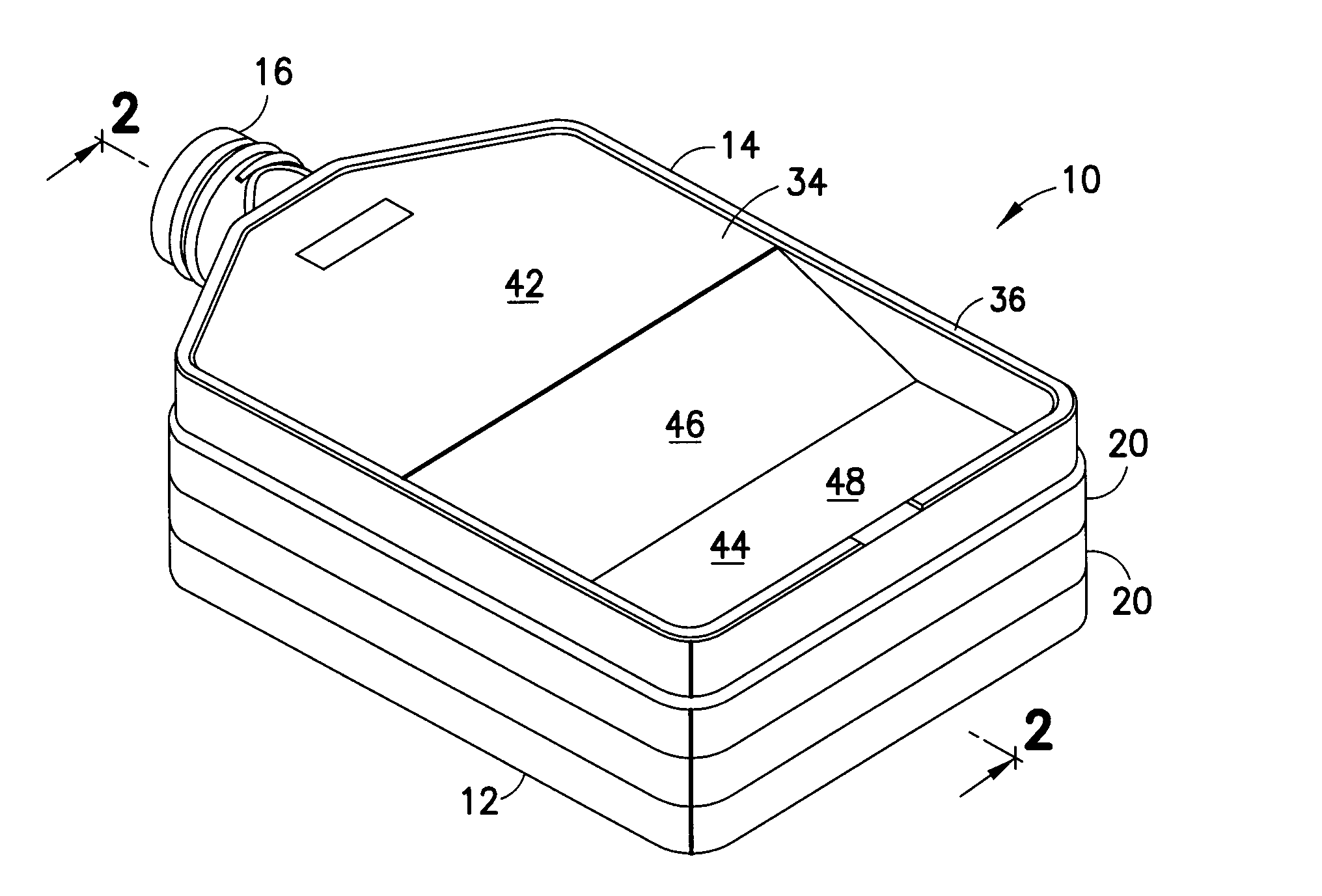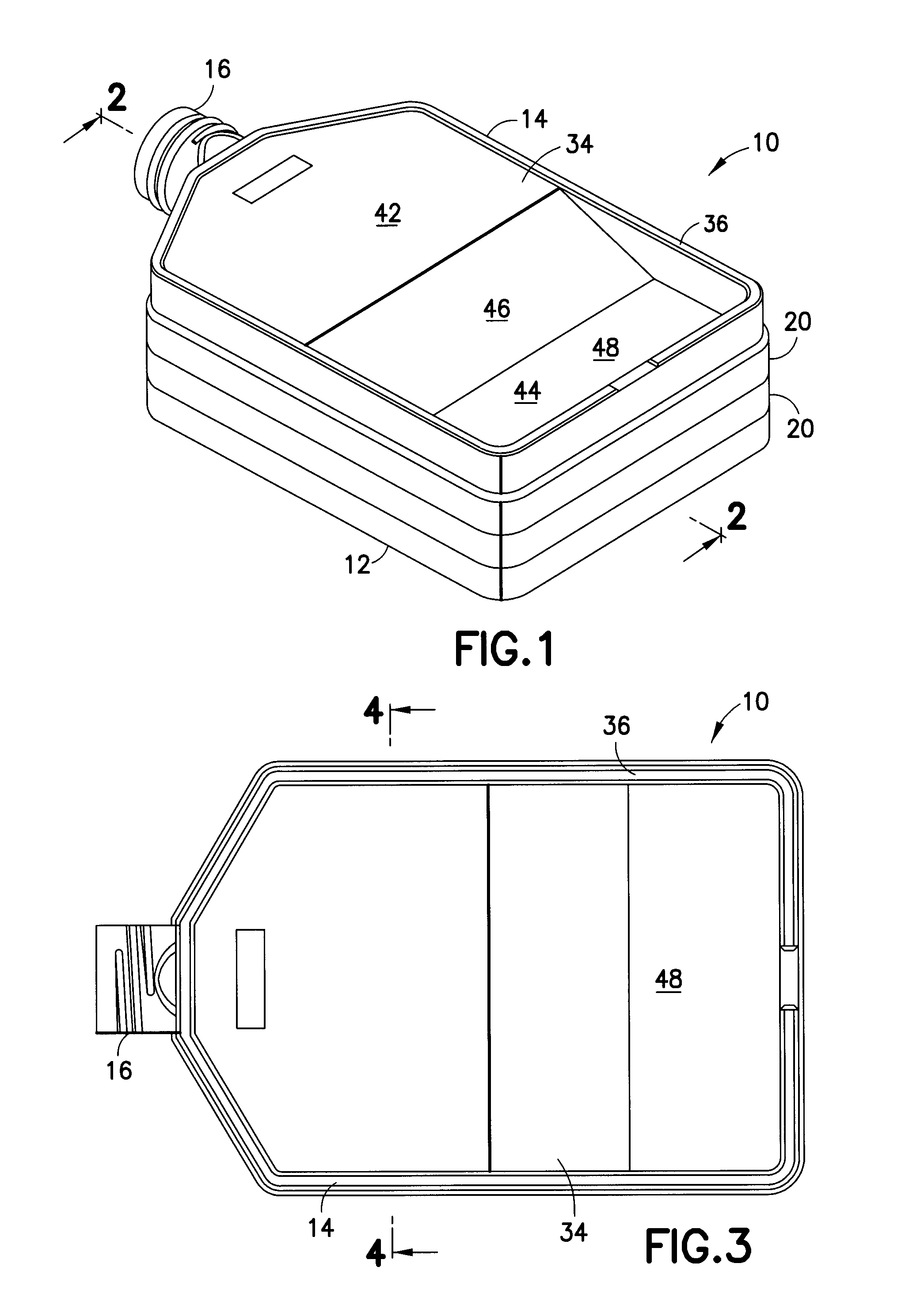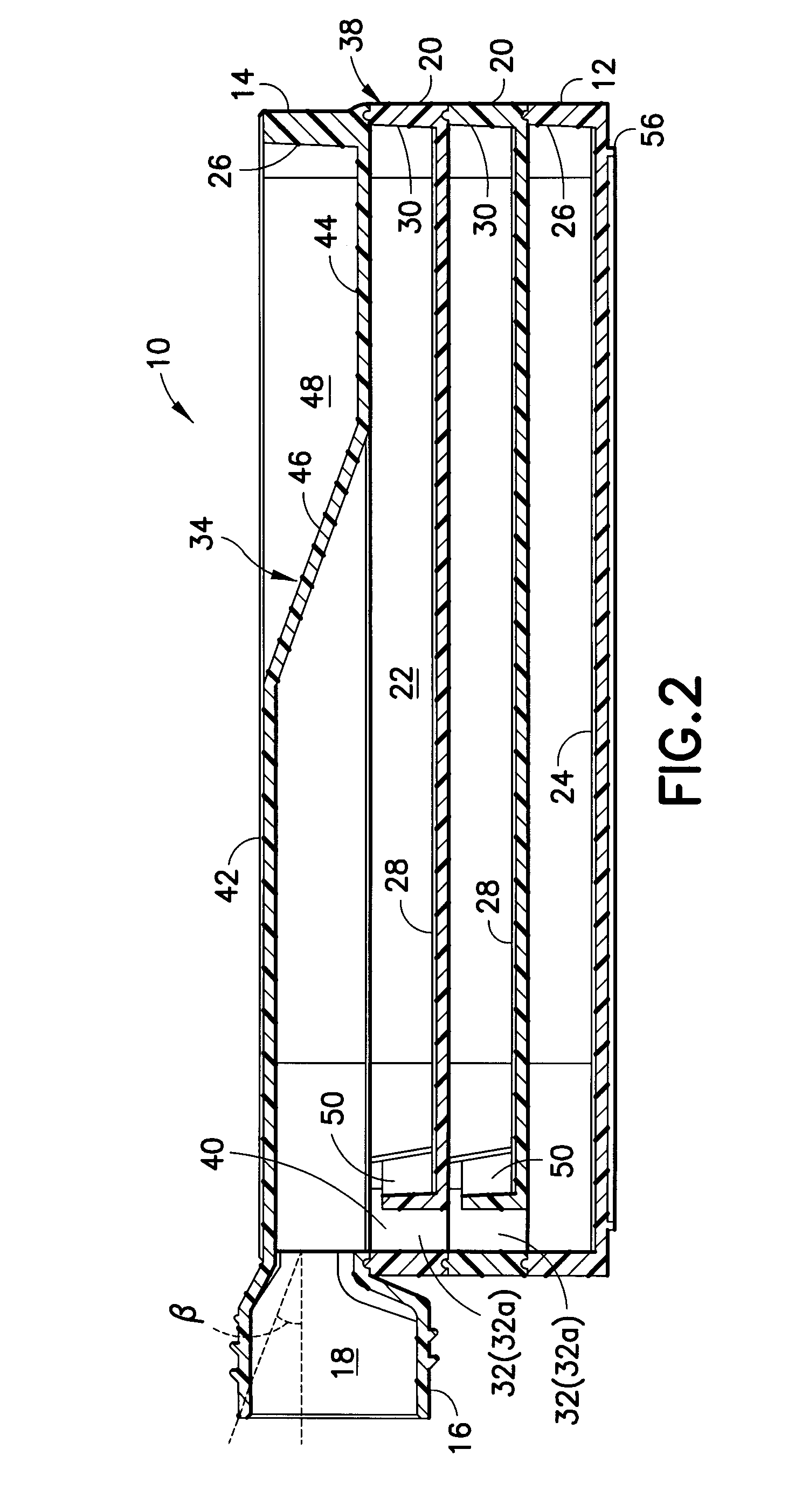Multilayer tissue culture vessel
a tissue culture vessel and multi-layer technology, applied in biomass after-treatment, biochemical apparatus and processes, specific use bioreactors/fermenters, etc., can solve the problems of laborious and expensive culturing of cells under sterile conditions, and achieve the effect of reducing the cost of culturing cells, high volume and increasing efficiency
- Summary
- Abstract
- Description
- Claims
- Application Information
AI Technical Summary
Benefits of technology
Problems solved by technology
Method used
Image
Examples
Embodiment Construction
[0031]With reference to the Figures, a vessel 10 for cell culturing is depicted. The vessel 10 may be utilized with various cell cultures, as will be appreciated by those skilled in the art. The vessel 10 generally includes a bottom 12, a top 14, a tubular neck 16, having an opening 18 defined therein, and one or more shelves 20 located intermediate the bottom 12 and the top 14. The bottom 12, the top 14 and the shelves 20 collectively define an enclosed volume 22 for culturing cells. The tubular neck 16 extends from the vessel 10, with the enclosed volume 22 being accessible by the opening 18 in the tubular neck 16.
[0032]The bottom 12 is generally tray-shaped with a base 24 from which upwardly extends a wall 26 which at least partially bounds the base 24. Preferably, the wall 26 fully bounds the base 24 perimetrically.
[0033]Depending on the overall desired size of the vessel 10, one or more of the shelves 20 may be utilized. The greater the quantity of the shelves 20, the greater t...
PUM
 Login to View More
Login to View More Abstract
Description
Claims
Application Information
 Login to View More
Login to View More - R&D
- Intellectual Property
- Life Sciences
- Materials
- Tech Scout
- Unparalleled Data Quality
- Higher Quality Content
- 60% Fewer Hallucinations
Browse by: Latest US Patents, China's latest patents, Technical Efficacy Thesaurus, Application Domain, Technology Topic, Popular Technical Reports.
© 2025 PatSnap. All rights reserved.Legal|Privacy policy|Modern Slavery Act Transparency Statement|Sitemap|About US| Contact US: help@patsnap.com



